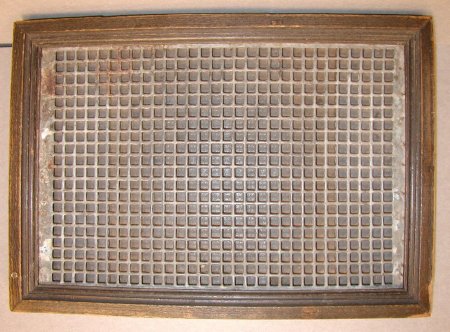Object ID:
2001.105.3
Title:
Arithmetic Slate
Description:
Slate has a wooden frame and a stamped tinplate grid with 600 cells (20 x 30) into which lead type is placed; stamped square holes, .25x.25"; each piece of type has a raised Arabic numeral (0-9) on one end and an indented line to guide in placement. The slate was designed as an instructional aid for working math problems in long division, multiplication, subtraction, and addition. See also 2001.105.5 for type used with this slate.
Date:
ca. 1904
Made by:
unknown
Provenance:
Artifact belonged to William Preston Holly (1893-1961) who was blind and learned to use the slate as a student at the Florida School for the Deaf and the Blind, St. Augustine, in 1904. He continued to use it in his business as a curb market vendor. After his death, Holly's slate went to his daughter, Buelah Brazzell. Originally called an Arabic Slate, this style of math aid was developed in Paris, France in the 19th century. One source from 1910 called it the Paris Method. APH developed its own model, known as an Arithmetic Type Frame, in 1936 at APH.
Credit Line:
Museum Purchase, 2001.105
